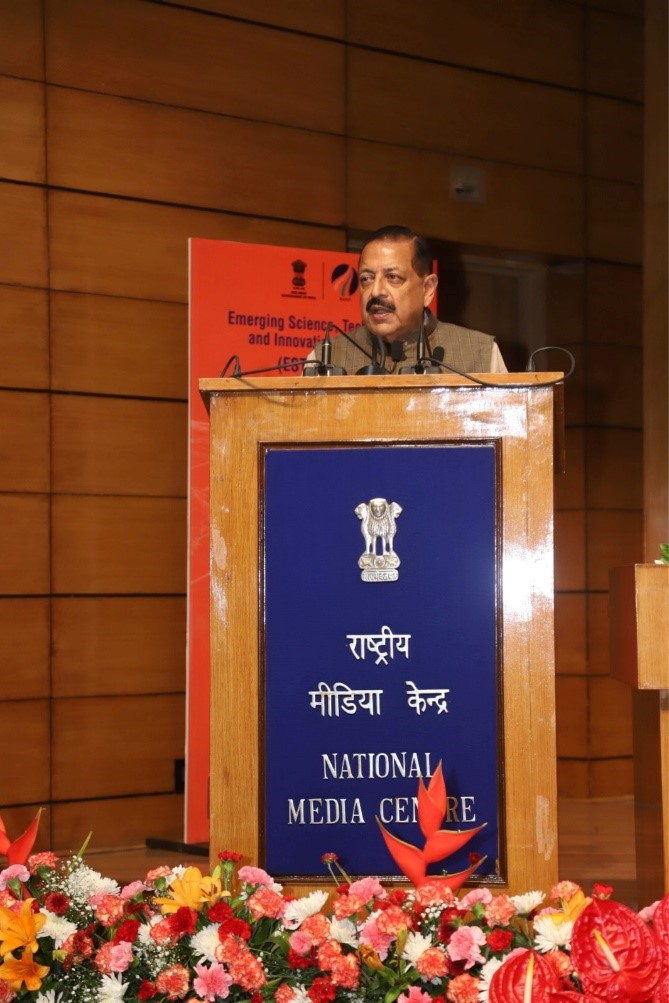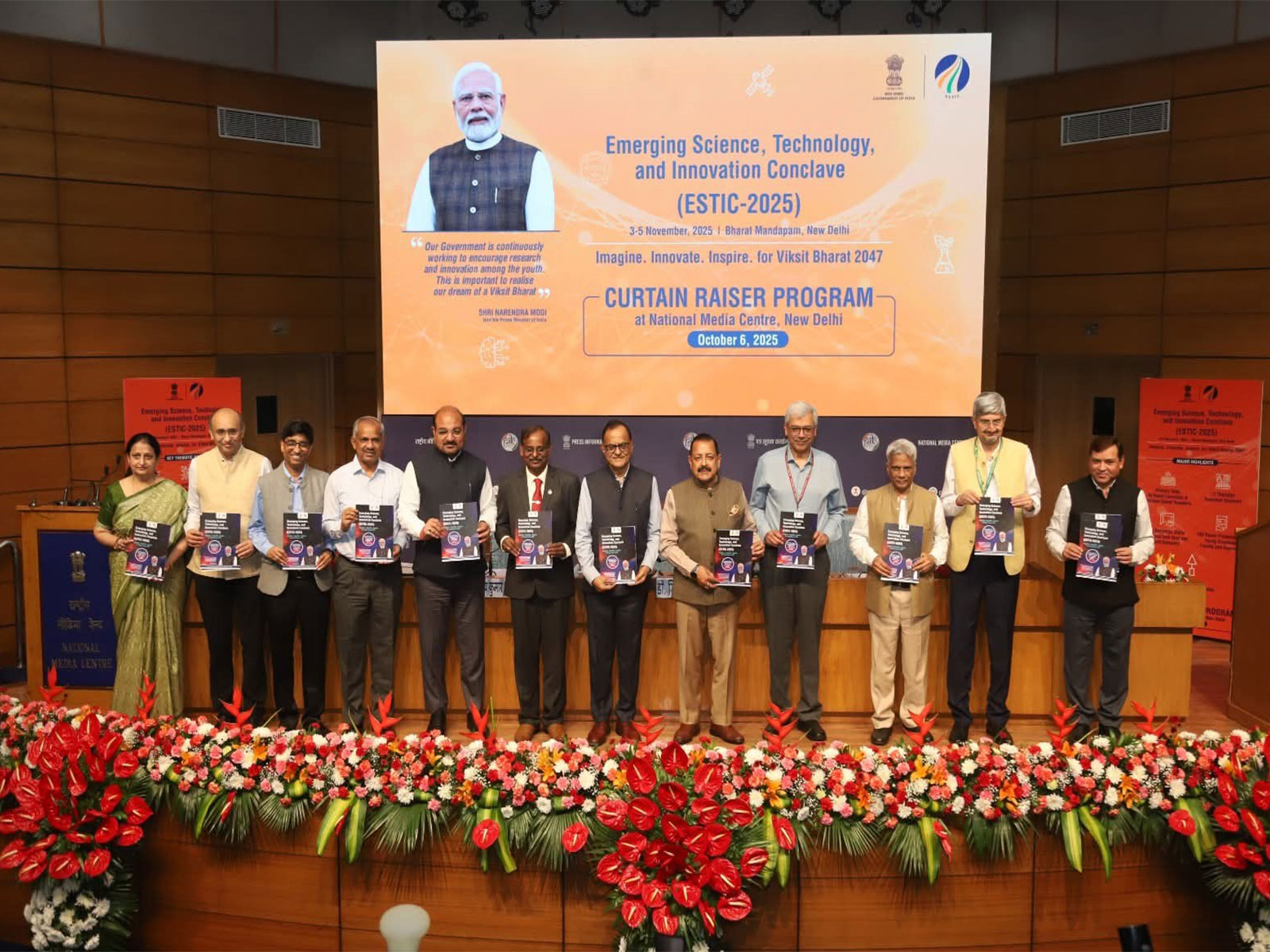New Delhi [India], October 31 (ANI): As India strides toward its vision of Viksit Bharat @2047, a developed nation and a $30 trillion economy, it faces a monumental challenge: meeting a massive, nearly threefold surge in energy demand. The national requirement is projected to skyrocket from approximately 10,500 TWh today to 28,000 TWh by 2047, an expansion crucial for powering its economic ascent. However, this aggressive growth collides directly with the urgent global imperative of climate action and India’s own net-zero goal by 2070.
With the energy sector responsible for roughly 75% of the nation’s emissions, the path to becoming a responsible global powerhouse hinge on a critical dilemma: how to fuel unprecedented development without deepening the environmental crisis? To tackle this pivotal crossroads, the Department of Atomic Energy (DAE) is steering a thought-provoking and brainstorming session on Energy, Environment, and Climate to come up with a vision with clear, identifiable goals. This effort presents a unique opportunity for India to drive sustainable growth through technological innovation, leveraging a portfolio of solar and wind, biomass, run-of-river hydro, coal with CCUS, and a decisive scale-up of nuclear as dependable, zero-emission baseload. The strategic aim is clear: energy security with environmental balance, delivered through scientific capability and domestic technology depth.
According to a statement, DAE is positioned as a key enabler by scaling reliable and zero-emission nuclear power capacity to 100 GW by 2047. DAE continues to deliver on its mandate of producing nuclear power, capacity building for nuclear power, creation and operation of research reactors and particle accelerators for radio-isotope and radio-pharmaceutical production, application of radiation technology solutions to address societal issues in areas of health care, food security, water & waste management through its Six Research Centres, Five PSUs, Three Industrial Organisations, 11 Aided Institutions and Three Service Organisations.
India’s 100 GW nuclear roadmap envisions a multifaceted expansion–incorporating large indigenous reactors, international collaborations, small modular reactors (SMRs), and advanced technologies such as fast breeder systems and innovative thorium-based fuels. Achieving this ambitious target will hinge on comprehensive policy reforms, a strong domestic manufacturing ecosystem, and mission-mode implementation across the nuclear energy value chain.
“The objective is clear: shorten the distance from the laboratory to the field and from a promising prototype to a dependable public-facing solution,” said Jitendra Singh, Union Minister of State (Independent Charge) for Science & Technology.
In this context, Dr. Ajit Kumar Mohanty, Secretary, DAE, underscored the vision of broad-based shift towards clean energy mix to augment the national energy generation capacity and to accomplish the ambitious goal of curtailing emissions to the targeted ‘net zero’ gradually by 2070.
In the last decade, nuclear electricity in the country has increased by about 60% and the installed capacity has increases by about 71%, with 25 reactors the total installed capacity rose to 8880 MW. The Capacity Factor and Availability Factor for operating fleet of reactors have remained consistently above 80% over last 5 years. Continuous operation of power reactors beyond a year has been recorded 52 times (including 4 stints beyond two years). Two VVERs KKNPP-1 and KKNPP-2 entered commercial operation (2014, 2017). Three indigenous 700 MWe PHWRs–KAPP-3 (Jun 2023), KAPS-4 (Mar 2024) and RAPP-7 (Apr 2025)–were commissioned. Additional 13100 MWe capacity is under implementation. 
The policy reforms include creation of the Indian Nuclear Insurance Pool and amendments in Atomic Energy Act to enable PSE JVs for faster capacity addition. The ASHVINI JV (NPCIL-NTPC) has received siting consent at Mahi Banswara (4×700 MWe PHWRs); environmental clearance has been accorded and foundation stone laid on Sep 25, 2025. NPCIL has also issued an RFP inviting Indian industry to participate in 220 MWe Bharat Small Reactors for captive power to decarbonise hard-to-abate sectors. The Nuclear Energy Mission has been announced with ₹20,000 crore outlay for development and deployment of five SMRs by 2033. The Atomic Energy Act 1962 and CLND Act 2010 are being amended to enable private participation.
In the field of Basic and Directed Research the DAE has significant achievements in last decade. The APSARA-U -2 MWth pool type research reactors- achieved criticality in 2018. The Low Energy High Intensity Proton Accelerator accelerators (LEHIPA) achieved 20 MeV energy target, medical cyclotrons (Cyclone-30) became operational and in astronomy MACE telescope installed at Hanle. In the field of Reprocessing and radioisotopes Demonstration Fast Reactor Fuel Reprocessing Plant (DFRP) was dedicated to the nation in 2024 and the Molybdenum-99 plant dedicated in 2023. Production of Sm-Co Rare Earth Permanent Magnets started at BARC, Vizag. rare-earth metals (lanthanum, cerium) were produced domestically. For food preservation through radiation technologies, to improved food safety and shelf life KRUSHAK facility is upgraded and being used for onions. In 2023, record 2500 tonnes of mango with radiation-enhanced shelf life shipped to USA. The Electronics Grade Boron-11 (B) Enrichment Facility, Talcher (for production of BF3 gas used as p-type dopant in the manufacturing of semiconductor chips) and secured manufacturing facility for EVM/VVPAT at ECIL provides departmental commitment in development of advanced technologies. In cancer care, the National Cancer Grid has grown to 370 members; TMC now treats ~125,000 new patients annually (10% of India’s total cancer burden).
At ESTIC-2025, the Energy, Environment & Climate theme will deliberate on a five-pillar strategy for a balanced, sovereign energy future: (i) solar & wind (targeting ~10,500 TWh by 2047); (ii) biomass (~3,000 TWh); (iii) run-of-river hydro (~2,000 TWh); (iv) coal with CCUS as a zero-emission bridge (~10,000 TWh); and (v) nuclear scaled as dependable baseload ( ~100 GW installed electrical capacity by 2047). Outcome notes will specify who will do what, with which standards, data and facilities, and by when, ensuring that decisions end in delivery.
The near-term focus is practical and time-bound: sustain high PLF and availability for the operating Nuclear reactors; time bound progress in fleet-mode 700 MWe PHWRs and JV projects; advance SMR pathways (through regulatory reforms and industrial partnerships); deepen domestic manufacture of nuclear-grade components; and expand societal applications–radioisotopes, food and water technologies, environmental services–so as nuclear science continues to deliver co-benefits beyond electrons. This executional cadence–project by project, line by line–connects directly to Viksit Bharat 2047: pioneering sustainable innovation (through reactors, SMRs, thorium utilization), technological advancement (indigenization, advanced materials, accelerators) and empowerment (affordable, clean power; health; food and water security). (ANI)
Disclaimer: This story is auto-generated from a syndicated feed of ANI; only the image & headline may have been reworked by News Services Division of World News Network Inc Ltd and Palghar News and Pune News and World News
HINDI, MARATHI, GUJARATI, TAMIL, TELUGU, BENGALI, KANNADA, ORIYA, PUNJABI, URDU, MALAYALAM
For more details and packages















